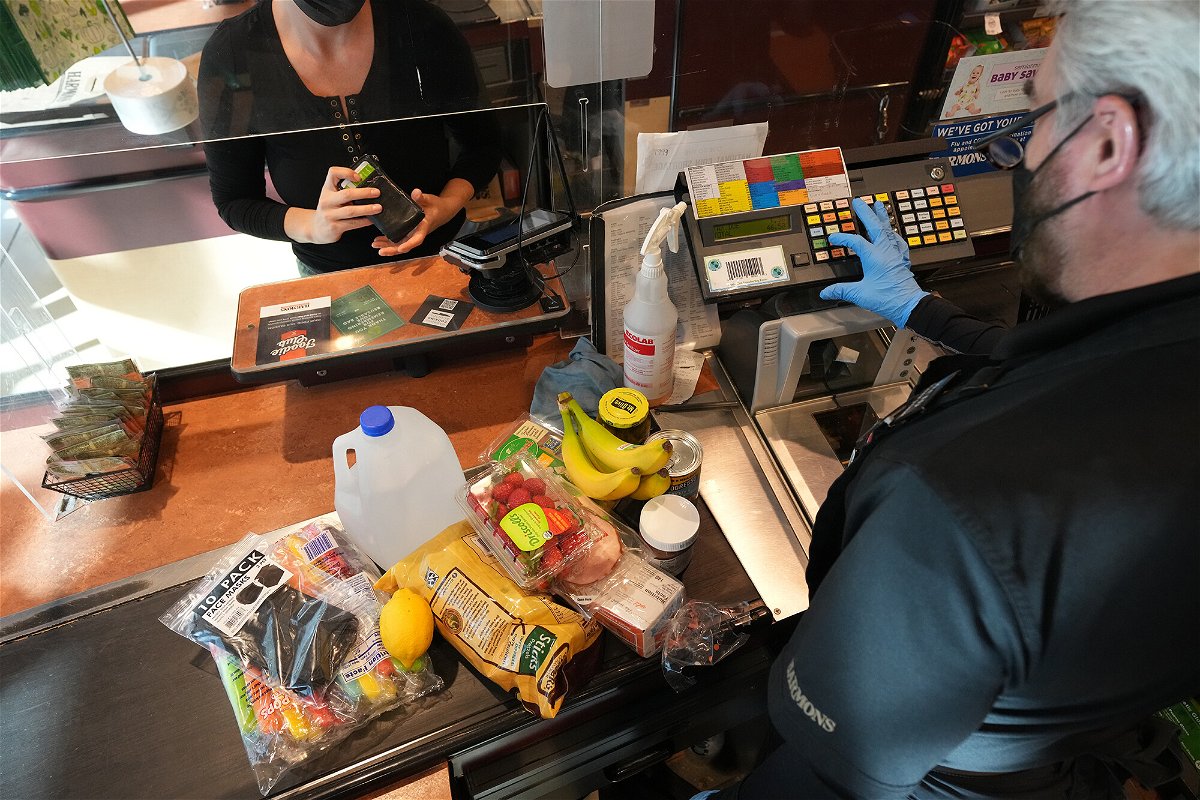US consumers borrowed $25 billion more in September

A cashier assists a customer at a checkout counter at Harmons Grocery store in Salt Lake City
By Alicia Wallace, CNN Business
American consumers borrowed another $25 billion in September, according to newly released Federal Reserve data, as higher costs led to further dependence on credit cards and other loans.
Economists were anticipating monthly growth of $30 billion, according to Refinitiv consensus estimates.
The data isn’t adjusted for inflation.
Consumer borrowing in September increased at a seasonally adjusted annual rate of 6.4%, according to the report. Revolving debt, which includes credit cards, grew by 8.7%.
“In normal economic times, that would be a huge jump,” Matthew Schulz, chief credit analyst for LendingTree, wrote in a tweet. “However, it is actually the second-smallest increase in the past year.”
Nonrevolving credit, which includes auto loans and student loans, increased by 5.7%.
“Generally speaking with cards, it’s getting harder to get a credit card,” Schulz said in an interview with CNN Business.
He noted a separate Fed survey released Monday on bank lending practices. According to the October 2022 senior loan officer opinion survey, standards tightened for approval of credit card loans while demand increased.
That’s likely showing up in this consumer credit data, he said.
“What we’re seeing is generally a pullback from lenders when it comes to folks with less than great credit,” he said. “When it’s harder for folks who really need to get credit, and when folks who can get it may not feel confident to want to spend as much, then you may see credit card debt growth slow down a little bit.”
Decades-high inflation has weighed heavily on Americans, outpacing wage gains and forcing consumers to rely more heavily on credit cards and savings.
In the second quarter of this year, credit card balances saw their largest year-over-year increases in more than two decades, according to separate data from the New York Federal Reserve. The third-quarter household debt and credit report is set to be released Nov. 15.
The personal savings rate, which is the percentage of disposable income allocated for saving, not spending, was 3.1% in September, according to the Bureau of Economic Analysis. That’s the second-lowest rate in more than 14 years.
The upcoming holiday season could add an additional wrinkle and make it even harder on people, he said.
“Any time you have credit card debt growth, it can either be a sign of confidence or a sign of struggle — it’s usually both,” he said. “But I think today, it’s probably leaning more toward people struggling than it has been in recent years.”
The-CNN-Wire
™ & © 2022 Cable News Network, Inc., a Warner Bros. Discovery Company. All rights reserved.